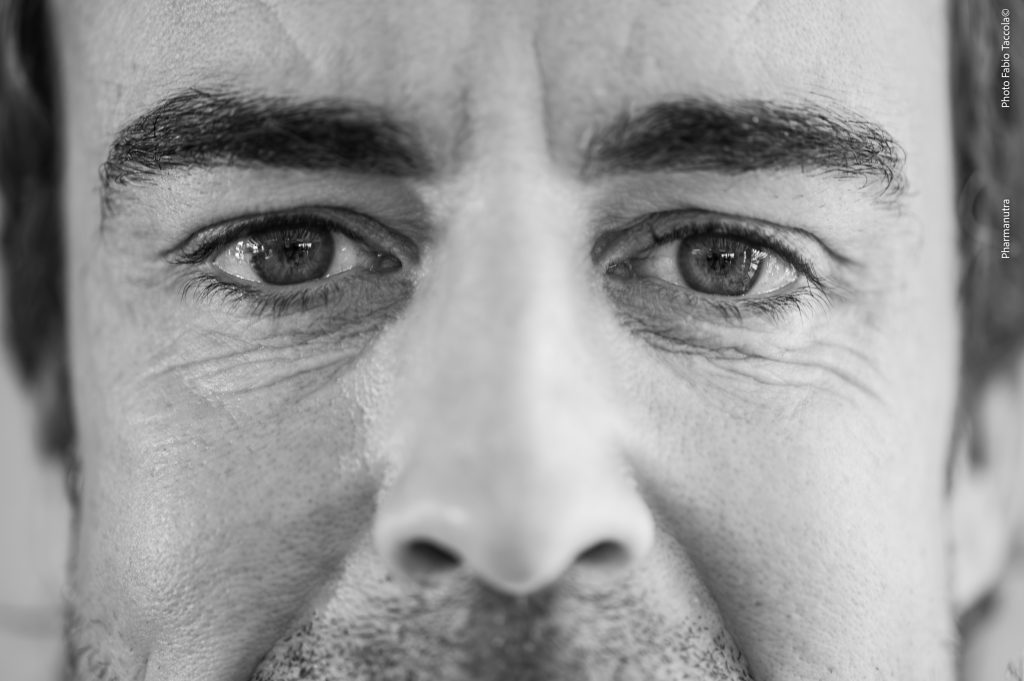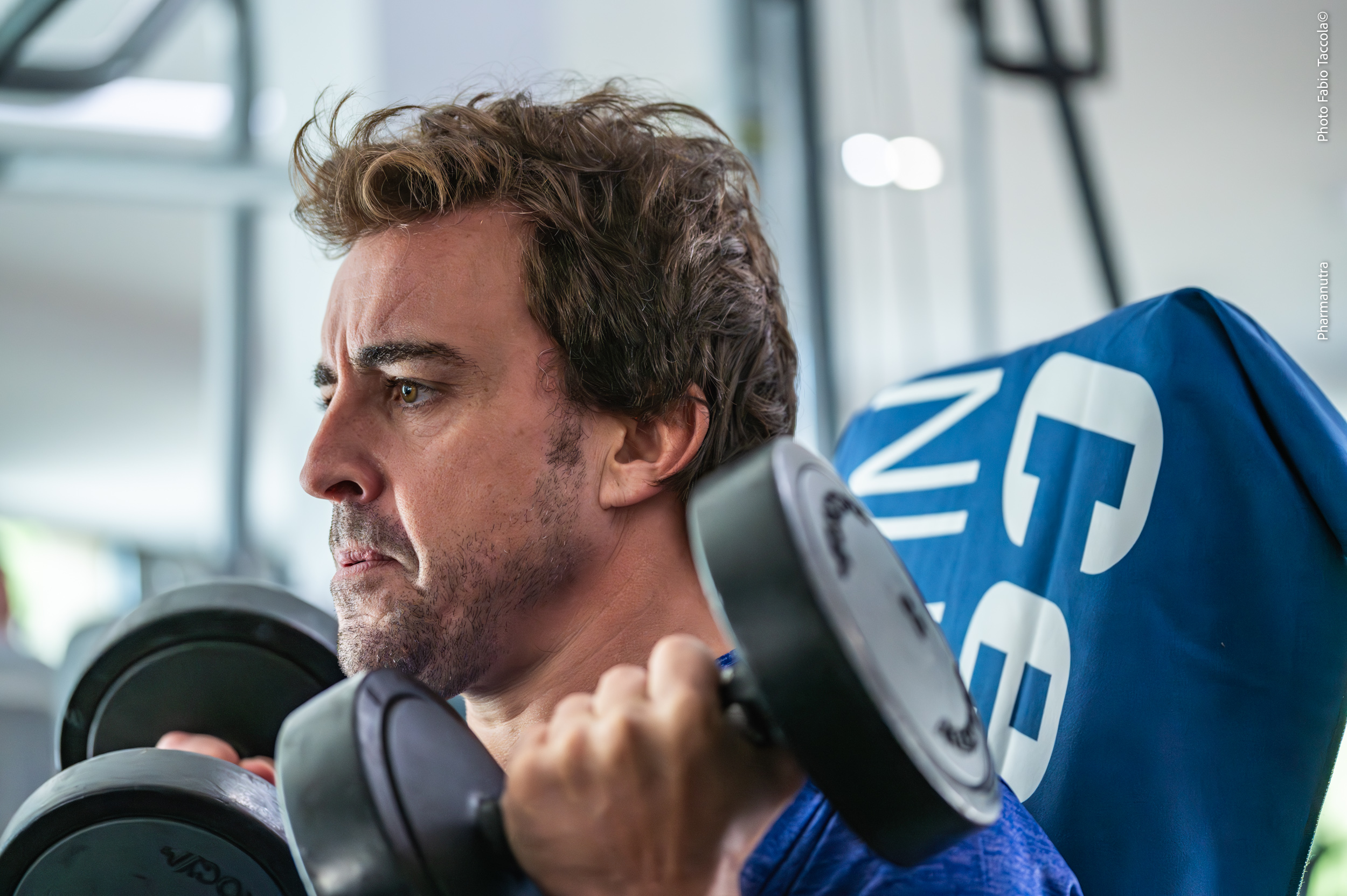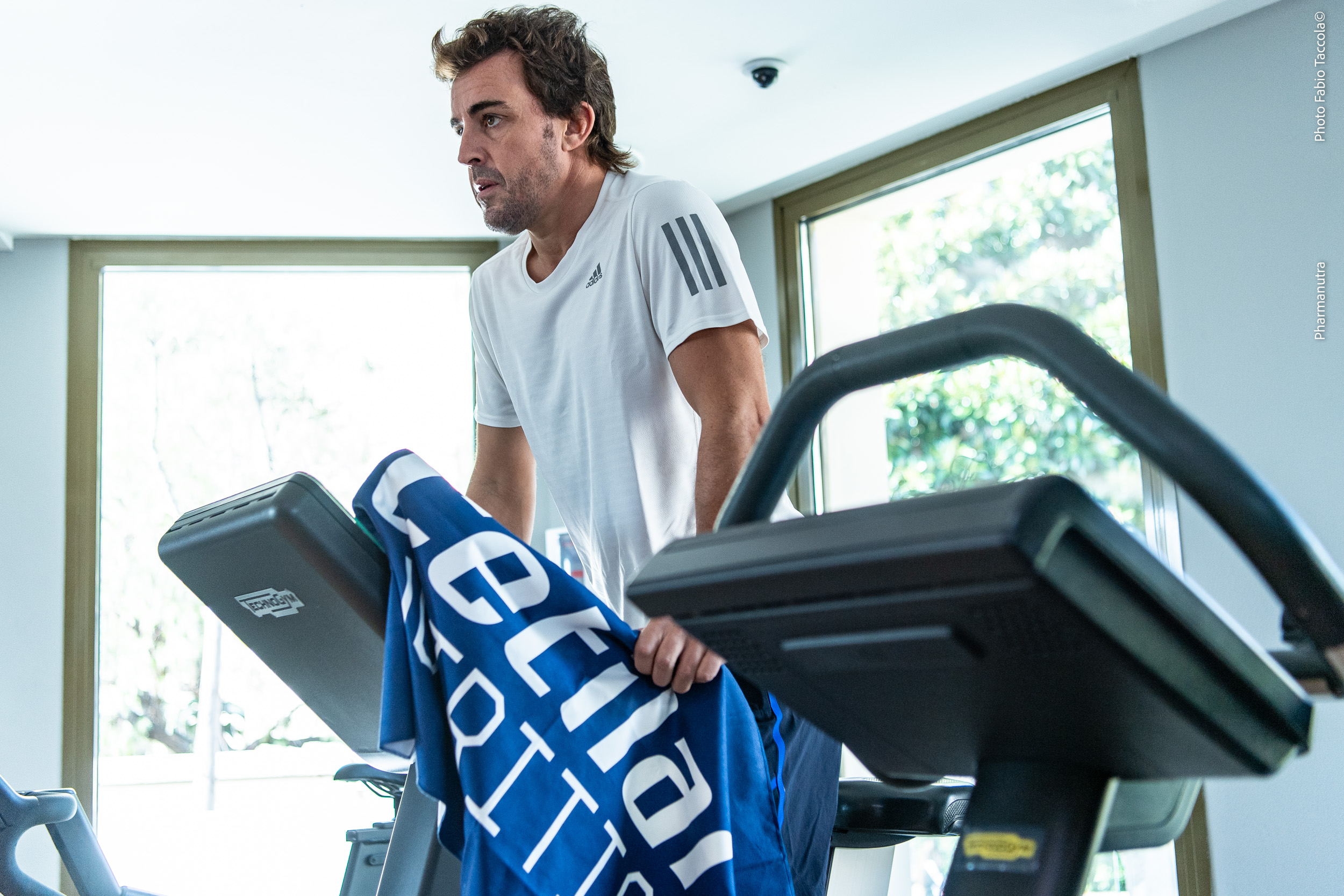Fernando Alonso: there’s still room for adrenaline

There are many words that could define Formula 1 but perhaps adrenaline is the most apt. Anyone who has ever heard the roar of the cars lined up on the starting grid at least once will recall the accompanying sensation, feeling of disbelief, shortness of breath and quickening pulse. Equating this to a rush of adrenaline is probably not even enough, but it is closest to what the audience feels, let alone the drivers.
The truth is that the very essence of Formula 1 is the constant chasing of time and the first opponents to be confronted are the principles of physics no less. The single-seater cars reach speeds of almost 360 km/h, carrying a fragile human body compressed into a cockpit where there is just enough space for the driver, as a part of the car itself, to continually challenge his own limits and those of the vehicle.
Every day your limits are pushed beyond what seemed unimaginable at the beginning of the journey.
Fernando Alonso, two world titles, a career that includes 21 seasons in F1, and counting, three 24 Hours of Le Mans, three IndyCar Series, three Indianapolis 500s, currently the record holder for the most Grands Prix competitions raced. Who better that he can sum up how much body, mind and challenging limits create that unique synergy we call performance?
In my eyes, performance is a very broad concept, one where the athlete, the person, the individual, is always striving for a standard of perfection that does not exist. It means working toward a goal that is perhaps unattainable. Always being at the top of one’s game, being the best version of oneself: that is the performance every athlete needs in my view.

In the life of a Formula 1 driver there is always room for adrenaline, little for improvisation. The fact that drivers are seated during races may fool you into thinking that driving is all they do; in reality, they would not be the elite of motorsport without an essential combination of talent and skill, which must be continually cultivated, season after season, race after race. They are, to all intents and purposes, athletes subjected to strict dietary regimens, gruelling training cycles and continuous physical and mental preparation sessions.
The head is very important in an athlete’s life because it affects their competitive drive. Mental strength is essential to master unpleasant feelings, such as fatigue and disappointment, and all the external factors that can interfere with the competition. Mental preparation helps to anticipate any problems that may occur: the head is what makes the difference if you consider that in Formula 1 all these stimuli are delivered at high speed.
When the gravitational force generated by cars propelled at over 350 km per hour is so great that it weighs on the driver’s body, increasing the weight of the head and helmet, which under normal conditions is around 6-7 kg, into a perceived weight of around 30-40 kg, the laws of aerodynamics suddenly become something very tangible and heavy. The human body was not born to be subjected to such intense stresses, which is why training is crucial.
A driver’s preparation focuses mainly on the upper body, which is the part that suffers the most in the car. That’s why you have to be 100 percent fit to keep racing to the end without losing an ounce of concentration. Athletic preparation is a very important aspect that must be done consistently, day in day out. Drivers also have to accept that over the years their body will respond differently and therefore that staying at the top of their sport involves new stages.
Endurance therefore becomes the watchword: driver training is multidisciplinary and intended to maximise athletic potential, focusing primarily on strengthening the muscles of the shoulders, arms and neck, without neglecting posture and stability exercises. Lower body strength is also vital, as the repeated effort made by the left leg pressing on the brake is equivalent to around 80 kg.
Nutrition is an integral part of the preparatory routine: sticking to a targeted dietary regimen is necessary to achieve optimum energy levels in any sport, and Formula 1 is no exception. It is critical, in fact, that body fat levels are kept low while maximising the percentage of muscle.
When you’re a top athlete, there is no time off: you have to accept the sacrifices involved, and this aspect also applies to nutrition, to which you have to pay close attention. Ensuring the best possible performance requires an understanding of the fact that high levels of motivation are needed to sacrifice our lives to travel, training and competitions, and a constantly controlled diet.
A driver’s position in the standings and the race itself, the number of laps, the top speed: many figures are used, in addition to words, in an attempt to give a more concrete dimension to a highly dynamic sport. A lot of work, commitment and concentration are needed in the run up to that fateful moment when those five red lights go out and the motivation of the one person holding the steering wheel in his hands is switched on. Every driver, however, knows that it all comes down to a team game, which mere mortals will only get a peek of in the shots filmed by cameramen in the pits and during pit stops.
This is a sport which, watched on a Sunday, may seem individual, because you only see one person in the car. But in Formula 1 there are more than 850 people working to make these two cars, each of them crucial. Without them, it would be impossible to complete the journey to the final result.
Fernando Alonso sponsors Cetilar®‘s trauma and nutrition ranges, helping the brand’s development and research grow and improve to meet the needs of athletes.
I am very happy to be working with Cetilar®. I personally believe in our union, which I find makes a lot of sense as I use their products daily, both on training days and race weekends. It goes without saying that I think they are good, and it will be very interesting to get directly involved in developing the new ones.
